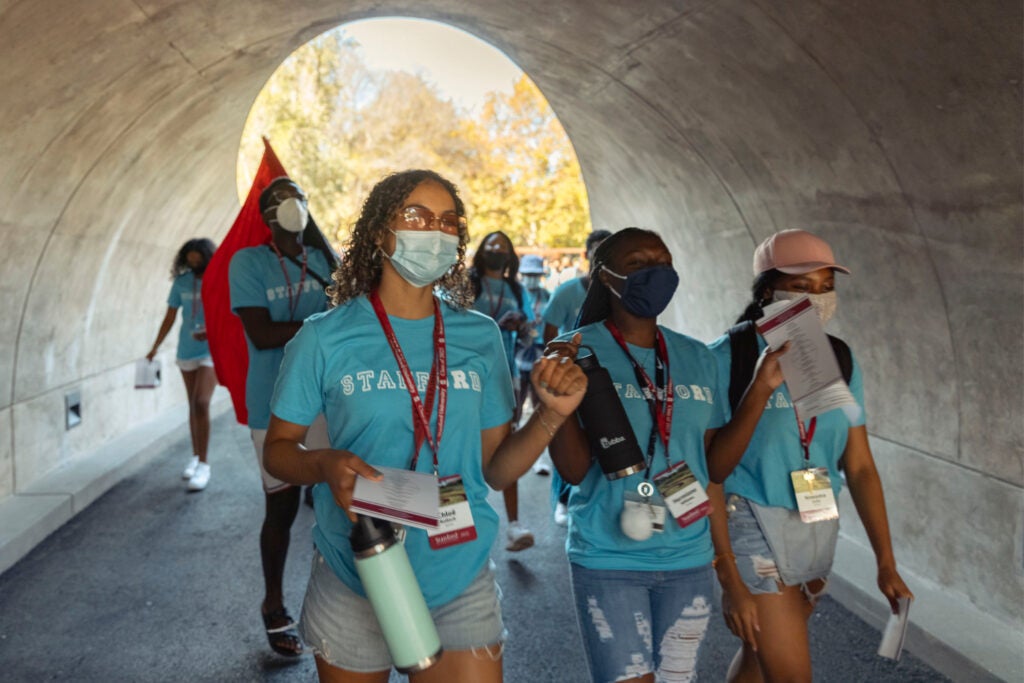Welcome home! Student ambassadors help undergrads bond with their neighborhoods
After meeting over social media this summer, students join in-person activities to meet their new neighbors.
As students move in for the 2021-22 school year, they join residential communities – called neighborhoods in the new ResX system – for the first time.

Students at Frosh Convocation, wearing their Neighborhood R t-shirts. (Image credit: Andrew Brodhead)
Events and swag are helping students settle in. Everyone received a neighborhood t-shirt. Frosh and sophomores attended neighborhood socials. And during the week of Sept. 27, all undergraduates were invited to neighborhood community barbecues.
But the bonding really began over the summer, when student ambassadors used social media to build excitement for the neighborhood model, help members of each community start to get to know each other and answer questions about residential life.
The ambassador positions were created to “bring more student voices and student perspectives as we’re thinking about such a huge project,” said Sydney Osifeso, associate director of administration in Residential Education. “It was a way students could reach other students, to get them excited about ResX and the neighborhood system and build that sense of anticipation.”
Student voices
Eight student ambassadors worked part-time over the summer on the project, for a $1,000 stipend. Each was assigned to a neighborhood and worked to establish accounts on Instagram and other social media channels, such as GroupMe and Facebook, for their neighborhood.
When the neighborhood system was announced last spring, there were meetings to answer students’ questions about the reasons for the change. By summer, said Amira Dehmani, Class of ’24 and the ambassador for Neighborhood F, students’ questions had become more tactical, such as “when will I meet my roommate?” and “what is the floor plan for my room?”
“A big focus for me was making sure people hit the deadlines for housing,” Dehmani said.
The ResX ambassadors also came up with ideas for making the transition to the neighborhood system go more smoothly:
- Neighborhood games: The goal is to hold a competition – both on social media and in-person – among the neighborhoods.
“It’s a great way to have a friendly competition and instill a sense of neighborhood pride early on,” Osifeso said.
The ambassadors worked with the Stanford Disability Alliance and others to make sure the event would be inclusive.
“We want to make sure we have some events for everyone,” Dehmani said.
- Transportation: The ambassadors suggested enhancing the routes and schedule for the Marguerite shuttle system.
“One of the major concerns students have about this new neighborhood model is the feeling of being isolated,” Osifeso said.
They want to be sure students can easily get between different parts of their neighborhoods, or from their neighborhood to the center of campus. They also envision an app to help people know when shuttles will arrive.
Now that the ambassadors’ summer role is over, the social media accounts for each neighborhood will be passed on to the neighborhood councils. The councils will include student representatives from each class year, resident fellows and professional staff including neighborhood program directors, resident directors, community coordinators, academic advising directors, staff from housing operations, and service centers and dining managers.
The next social media campaign will be “Faces of the Neighborhood,” where each neighborhood Instagram page will highlight members of the community.